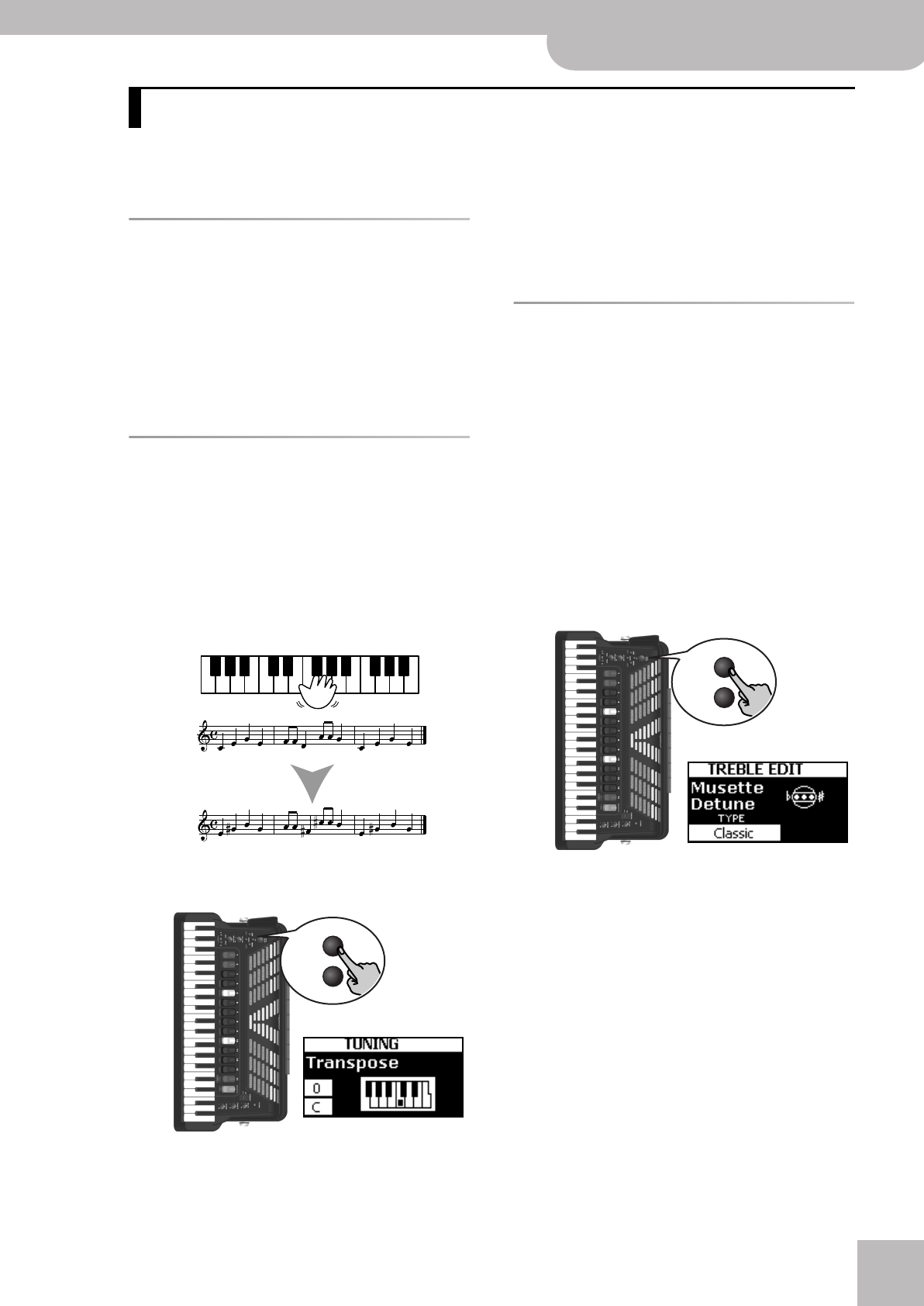
Other practical functions
V-Accordion
r
35
Let us now have a look at the first “purely electronic” functions of your FR-7x. In this chapter, we will discuss functions
that may be new to you but may come in handy once you know what they do and how they work.
General remark
The functions discussed below can be selected via the
front panel, because you may need them at regular
intervals.
Any changes you make are not saved automatically. If
you want to keep them, you must save them (see
p. 103).
Note: The functions discussed in this chapter can also be set
using the FR-7x’s menu.
Transpose
The FR-7x contains a Transpose function that allows
you to change the key of the music you are playing.
The advantage of this system is that you can play a song
in E major (for example), while using the fingering of the
C major scale (for example). This may come in handy
when you are used to playing a given song in one key
and suddenly need to play it in a different key.
Let’s look at an example:
(1) While the main page is displayed, press the [UP]
button once.
(2) Rotate the [DATA÷ENTER] knob to select the desired
key (transposition).
The setting range is –6~+5 semi tones. Select “0” to
switch off the transposition.
(3) Press [EXIT÷JUMP] to return to the main page.
Musette Detune
You probably know that an accordion’s 8’ Treble register
may consist of 2 or even 3 reeds that are usually tuned
apart to provide a richer sound (accordionists call it the
“musette effect”). One reed is tuned slightly above, the
other slightly below the correct pitch, and the third (if
available) is tuned “properly”.
Tuning reeds is a specialist job and usually not per-
formed by accordion players themselves.
On the FR-7x, however, “tuning” the “reeds” (that do not
really exist) is a matter of turning the [DATA÷ENTER]
knob.
Note: This function is only available for the treble section.
(1) While the main page is displayed, press the [UP]
button twice.
(2) Rotate the [DATA÷ENTER] knob to select the a dif-
ferent tuning for the treble “reeds”.
The possibilities are: Off (no detune), Dry, Classic, F-
Folk, American L, American H, North Eu, German L, D-
Folk L, Italian L, German H, Alpine, Italian H, D-Folk H,
French, Scottish.
(3) Press [EXIT÷JUMP] to return to the main page.
10. Other practical functions
Transpose
This is what you play…
…and this is how it sounds.
UP
DOWN
UP
DOWN
FR-7x GB.book Page 35 Tuesday, August 25, 2009 10:58 AM


















